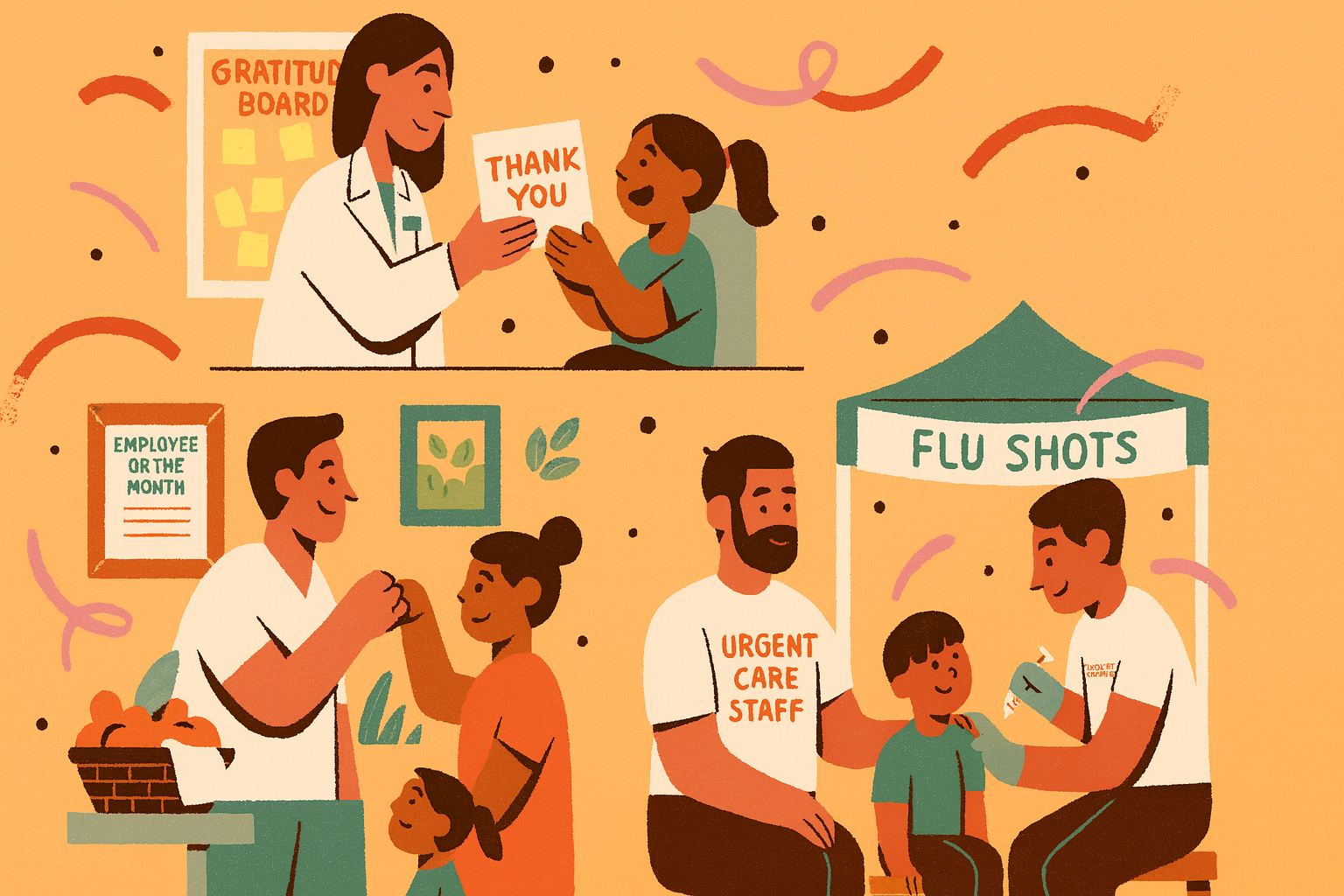

Understanding the Causes and Impact of IV Fluid and Medication Shortages in the United States
Nationwide shortages of IV fluids and essential drugs in 2024 are disrupting urgent care operations and patient treatment.

The United States healthcare system has been facing a critical shortage of IV fluids and essential medication, significantly impacting urgent care centers and nearly all healthcare facilities nationwide. Thus far in 2024, the following types of medication classes have experienced both intermittent and long-term shortages: antimicrobials - including antibiotics, central nervous system drugs such as Adderall and Ritalin, IV fluids and electrolytes, RSV treatments for infants, semaglutides- such as those prescribed to diabetics and for weight loss, and a wide variety of sterile injectables such as those used in chemotherapy.
While it doesn’t frequently make the daily news, both healthcare providers and patients have experienced the impact of these shortages. Physicians must alter treatment plans when a specific medication is not available, while patients are often waiting weeks for their prescriptions to be available at the pharmacy.
This shortage affects everything from patient outcomes to the efficiency of medical staff, posing new challenges to both routine care and emergency response. Understanding the causes, impacts, and potential solutions to this shortage is crucial for healthcare providers and patients alike.
The Causes of IV and Medication Shortages
1. Manufacturing and Quality Control Issues
- Manufacturing Complexities: The production of IV fluids and certain medications is highly complex, requiring precise environments, specialized equipment, and strict quality controls. A single contamination or error can lead to shutdowns for weeks or months, interrupting the supply chain.
- Quality Control Failures: Companies like Baxter, which supply a significant portion of the U.S. market, have faced production halts due to quality concerns. When production halts at a major facility, alternative sources may be unavailable to meet the increased demand.
2. Natural Disaster and Environmental Disruptions
- Hurricane Helene: Baxter International in North Carolina suffered extensive damage due to flooding from the hurricane. Logistically, even the roads that support transportation to and from the facility were severely damaged. Fortunately, the plant is back online as of the beginning of November, but production is not expected to return to 100% until the end of the year.
- Pandemic Strain: The Covid-19 pandemic highlighted the vulnerability of the pharmaceutical supply chain, as demand surged for key medications and IV fluids used in ventilator support, with manufacturers struggling to keep up with an unprecedented demand.
3. Economic and Market Dynamics
- Low Profit Margins: Many generic IV fluids and medications, especially saline solutions, have low-profit margins, discouraging manufacturers from expanding or upgrading production lines. Consequently, there are few suppliers in the market, making it vulnerable to shortages.
- Global Supply Chain Reliance: Many raw materials and active pharmaceutical ingredients (APIs) come from overseas, particularly China and India. Trade disputes, quality issues, or logistical challenges in these countries can delay shipments and disrupt the production schedules of U.S. manufacturers.
4. Regulatory Challenges
- FDA Scrutiny: The Food and Drug Administration (FDA) closely monitors the production and safety standards of pharmaceuticals in the U.S. While this is crucial for public safety, stringent regulations can inadvertently contribute to shortages if manufacturers struggle to meet these standards.
- Approval Bottlenecks: When shortages occur, the FDA can expedite approvals for alternative manufacturers. However, the process can still take time, delaying relief efforts for affected products.
The Impact of IV Fluid and Medication Shortages
1. Financial Strain on Healthcare Facilities
- Increased Costs: Healthcare facilities often turn to alternative suppliers or compound products, which may be more expensive. During shortages, prices can skyrocket as demand outpaces supply.
- Waste and Resource Allocation: Managing inventory during shortages is a delicate task. Facilities must allocate limited resources carefully, potentially leading to waste if products expire due to lack of use.
2. Increased Burden on Healthcare Providers
- Administrative and Clinical Pressure: Pharmacy staff and clinicians spend valuable time sourcing alternative products, adjusting protocols, and educating staff on new treatments or dosing changes.
- Moral Distress: Healthcare providers often face ethical dilemmas when forced to ration care or prioritize certain patients over others, leading to increased stress and burnout among staff.
3. Public Health Risks
- Epidemic Control: Shortages of essential antibiotics, antivirals, or saline solutions can hinder responses to infectious disease outbreaks, making it difficult to control the spread and provide adequate care for affected populations.
- Impact on Vulnerable Populations: Pediatric and geriatric patients are especially vulnerable to medication shortages, as they often require specific formulations or dosages that may be unavailable during a shortage.
Strategies to Mitigate IV Fluid and Medication Shortages
1. Investing in Redundant Manufacturing Capacity
- The U.S. government and private sector can work together to incentivize additional domestic production facilities for essential IV fluids and medications, reducing dependence on single-source suppliers.
2. Regulatory Reforms
- Expedited approvals for alternative suppliers during shortages, coupled with international cooperation to ensure smooth imports of APIs, can help prevent future disruptions.
3. Technology-Driven Inventory Management
- Advanced inventory management systems, powered by artificial intelligence, can help hospitals monitor usage patterns, predict shortages, and adjust purchasing plans in real-time to avoid unexpected gaps in supplies.
4. Encouraging Diversified Sourcing
- Diversifying suppliers of raw materials and finished pharmaceuticals across multiple countries, instead of depending on a few, can strengthen the resilience of the supply chain.
Conclusion
The shortage of IV fluids and medications in the U.S. is a multifaceted challenge that affects nearly every level of healthcare. With patient care, hospital resources, and public health at stake, addressing these shortages requires a collaborative effort between manufacturers, healthcare facilities, and regulatory bodies. As the healthcare industry continues to evolve, investments in manufacturing capacity, regulatory flexibility, and technological advancements offer promising solutions to create a more resilient pharmaceutical supply chain. By proactively addressing these vulnerabilities, the U.S. can better safeguard its healthcare system against future disruptions and ensure uninterrupted, high-quality care for all patients.
While solutions and recovery from these shortages will take time, understanding the causes and consequences of these shortages is a critical first step in ensuring that urgent care facilities can continue to provide safe and timely care to those who need it most.
More blog posts to read
Prefer to send an email? Send us your request at sales@urgentiq.com, and we'll coordinate with you directly.
We're thrilled that you're interested in joining us. Please fill out the form below to get started on your journey with UrgentIQ.




